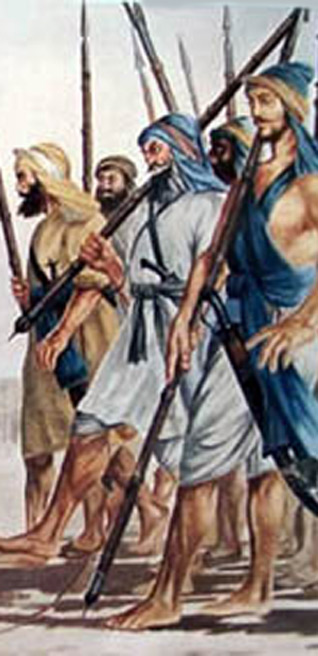Resource Library
Democracy - Joint Leadership, Joint Responsibility:
Basics - The Writings of Bhai Ardaman Singh of Bagrian
Bhai ARDAMAN SINGH
From the very beginning, Satguru laid a very deep and sound foundation of democracy in the Sikh Panth.
At the first instance, we find that when Guru Nanak left this world, he left no instructions as to how the pyre was to be disposed off. It was left to his disciples to decide. Consequently, what was left was divided between the contending parties.
Then, during the Fifth Guru’s time when an offer of the daughter of Chandu Shah for marriage with young Hargobind was received, the sangat of Delhi sent word that the offer was not worth considering. It was thereupon politely refused. This created bitterness and Chandu Shah became one of the main instigators of Emperor Jahangir’s ire against the Sikhs.
The spirit of democracy was thus upheld.
When the time for the Eighth Nanak came to delegate Guruship, though he gave a clear enough indication, he left the selection of his successor to the Sikhs.
This, they successfully did, under the guidance of Makhan Shah, a trader in Kathiawar, and announced the Guruship of Guru Teg Bahadar.
The Tenth Satguru finally established this way of democracy in the Panth when in 1699 he administered amrit to the Five Beloved Ones and then requested them to administer amrit in the same way to him as he had done.
Thus, when passing on the Guruship to the Khalsa under the Supreme Sovereignty of the Gurshabad, the Gurbani incorporated in the Holy Granth, he established thereby some other very important principles too.
The first is that there is no possibility for any personality cult amongst the Sikhs after the Tenth Satguru.
Secondly, it was laid down that henceforth the system of joint leadership and joint responsibility in a democratic set-up will be followed. Whenever we tilt towards authoritarian dictatorship, we get off the track and head towards our downfall.
History tells us that the Tenth Satguru implemented and brought these principles into actual practice himself.
When Anandpur Sahib was evacuated in the winter of 1704, the Satguru in several ways told the Sikhs that this step was not well advised. Those who did not listen to his advice were asked to give it in writing and 40 of them even signed a ‘disclaimer.’ Though at that time they deserted the ranks and went away, yet on being reprimanded and shamed by their own women and families and friends in the Majha Ilaaka, they returned under the leadership of Mai Bhago, deeply repentant, and offered their lives for the Satguru at Muktsar.
Finally, during the siege of Anandpur when the majority persisted with its demand, the Guru agreed to evacuate the fort.
What tragedies happened afterwards, how the Guru’s two elder sons lost their lives fighting valiantly at Chamkaur alongside a large number of other Sikhs, and how two of his younger sons were bricked alive and martyred at Sirhind and the Guru’s mother lost her life, are historical facts known to us all.
But the Guru never complained that in spite of his advice they had taken a wrong decision.
Similarly, the escape from Chamkaur Sahib was in compliance with the decision and orders of the Khalsa. The Satguru’s own intention was to fight there to the end. The Sikhs in the fortress of Chamkaur decided that if the Satguru is saved the Panth would be saved too; that otherwise, both would be imperilled.
[Courtesy: “Thoughts of Bhai Ardaman Singh”, compiled by Bhai Ashok Singh. Institute of Sikh Studies, Chandigarh, Punjab. Edited for sikhchic.com]
May 25, 2013
Conversation about this article
1: Joshvinder Singh Walia (Nilai, Malaysia), June 09, 2018, 8:20 AM.
Insightful comments. This excerpt brings a new meaning to my understanding of democracy under Sikhi.



